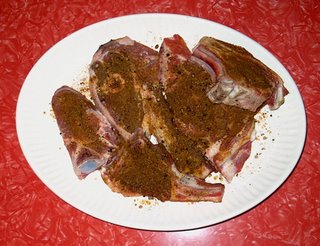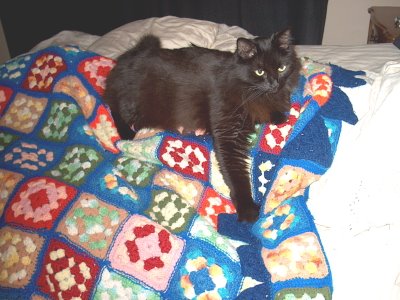This particular entry has been months in the making. Long before blogging was a glimmer in my luddite's eye, I read of the "snark wars" waged between reviewers like Laura Miller, Dale Peck, and Heidi Julavits. Initially I sided with Miller, but was taken aback by the ferocity of Peck's
more vitriolic screeds. And while I am not a fan of
The Believer, I had to agree that attacking writers for the sheer joy of nastiness was, well, nasty.
Now comes
Michiko Kakutani's withering take on Jonathan Franzen's latest, a memoir entilted The Discomfort Zone. Like every other wanna-be writer, I followed Franzen's Corrections trajectory: the Oprah debacle, the National Book Award (including the speech, where he thanked Oprah), the
Kathryn Chetkovich Granta essay. If Kakutani's review is any indication, Franzen should suit up for a fresh round of abuse from the literary hoi polloi. (It must be noted that Ed Champion, who first alerted me to the concept of snark, has read Franzens' book, and
hates it more than Kakutani).
This is not to say his new book is wonderful or the criticisms undeserved. I haven't read it and cannot comment. But Franzen, alas, seems adroit at putting his foot in his mouth, and while I appreciate his talent, I'm not sure I'd want to be his friend.
Which leads us to the separation of the writer from the work. At times, particularly in the memoir genre, this can be difficult, if not impossible. But even a memior, which purports accuracy, is a book. Not the writer himself or herself. Meaning the thoughful critic, while hating the book and maybe even its author, should refrain from personal attacks.
With these thoughts in mind, I want to discuss
Kathryn Harrison's 2005 novel, Envy. Harrison is perhaps best known for The Kiss, a memoir depicting her incestuous relationship with her father. Given its content, the work generated tremendous publicity, much of it overlooking Harrison's tremendous writing talent. Hers is the kind of prose oft described as "luminous", "limpid", "crystalline". This exquisite prose ranges from historical fiction to work set in contemporary New York to the non-fiction found in Seeking Rapture and The Mother Knot. Her NYTBR reviews are models of evenhandedness.
I have followed Harrison's career ever since finding Exposure in a used bookstore. The year was 1995; Hockeyman and I were attending grad school and flat, flat broke. Used books were all we could afford, and even those in limited quantities. The only authors we bought new in hardcover were Margaret Atwood--I remember the thrill of buying Alias Grace new--and
William Gibson's All Tomorrow's Parties. But Harrison's writing so enchanted me that I immediately went out and bought Thicker than Water as a new paperback. Later I special ordered The Mother Knot and The Road to Santiago, both in hardcover. Each is in print but difficult to find. When the Seal Wife came out, in 2002, I went to see Harrison read at
Black Oak Books. She was beautiful, rather fragile-looking, and very gracious. Despite her kind demeanor, I was too initimidated to get my copy signed.
Harrison is a relentless chronicler of her mental states--episodes of severe depression, bouts of anorexia, Graves' disease. Knowing this made me hesistant to speak ill of her work. Not that she is likely to find out, or even care that some anonymous nobody blogger didn't like Envy.
Still, the entire business gave me pause. My primary problem with the book is its overburdened plot. There is the death of Will Moreland's son, Luke, its effect on his marriage, specifically, on his sex life with wife Carol. There is Will's estranged twin, Mitchell, a famous swimmer wih a disfiguring birthmark and some nasty habits. There is Will's college lover, Elizabeth, with whom Will is certain he has conceived a child. Finally, there is Will's problem patient (he's a psychotherapist), Jennifer, who may or may not be his daughter. In an act of what could almost be called reverse rape, Jennifer seduces Will.
Any one of these topics would easily make an entire novel. In Envy, we are confronted with this bewildering, frankly unrealistic set of events and gamely try to follow along. At least, I did, with increasing dismay. Will Moreland comes across as a hapless fool, his wife and daughter are one-dimensional ciphers. Jennifer is convincingly bitchy and awful, so much so that I wondered at Will's weakness in the face of her sexual behaviors. A saner person--which Will reportedly feels he is--would have fled.
Given the efforts needed to reign in a plot like this, Harrison's ususal facility with prose suffers. Hardest hit is the diagloue, which struck me as so stilted at times that I wondered if wealthy New Yorkers indulged in a variant of Berkeley's pc speech mannerisms.
The following snippet takes place between Will and his therapist/mentor, Daniel.
""Will?" Daniel innterrupts a lengthening silence. "Where are you?"
(Will gives a long reply about being vs. becoming, which I will skip.)
"Becoming?" Daniel says.
"Yes. My whole life, my work life and my personal life, is devoted to this...conceit of becoming." (Again, I am skipping. Will expands on this.)
"Why do you call it a conceit?"
"Call what a conceit?"
"Becoming. The idea of becoming."
"I don't know. I mean, obviously, I believe in becoming. But maybe the god I serve is false. Maybe I'm deluded."
"Maybe we all make our own gods, each as valid as the next's person's."" (185)
Ouch.
In the acknowledgements that conclude The Mother Knot, Harrison thanks her agent, Amanda Urban, for stopping her from publishing a certain book. One wonders what it was about that particular manuscript that gave Urban pause, and why such a keen-eyed woman did not intervene with this book.
Still, from my seat as anonymous blogger, under contract to nobody, it's easy to pass judgement. And one flawed book in eleven is an enviable record few of us can claim to match.
Harrison publishes about every two years; with luck there will be something new in 2007. Acting on past experience I will buy the book in hardcover. The odds are good she won't let me down.
Harrison, Kathryn.
Envy. New York: Random House. 2005: 185
Authors,
Books,
Book Reviews

















